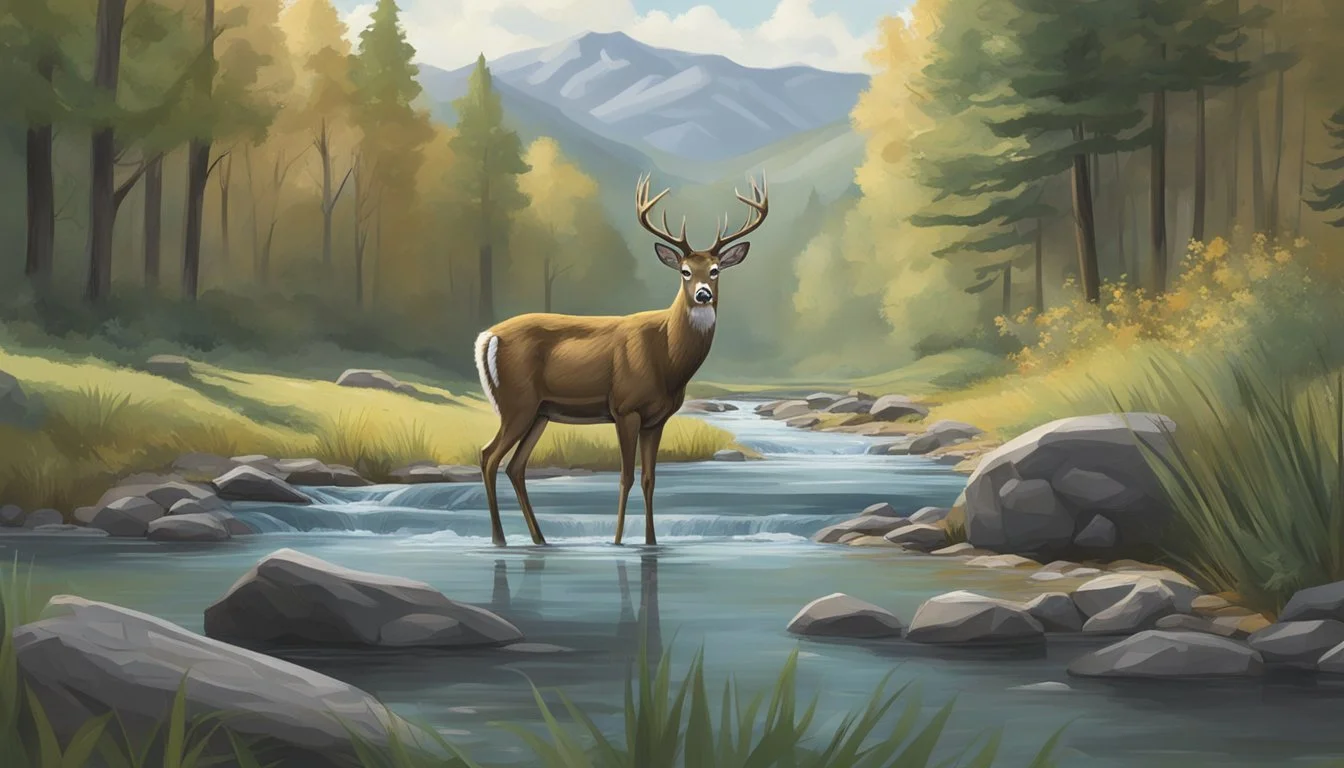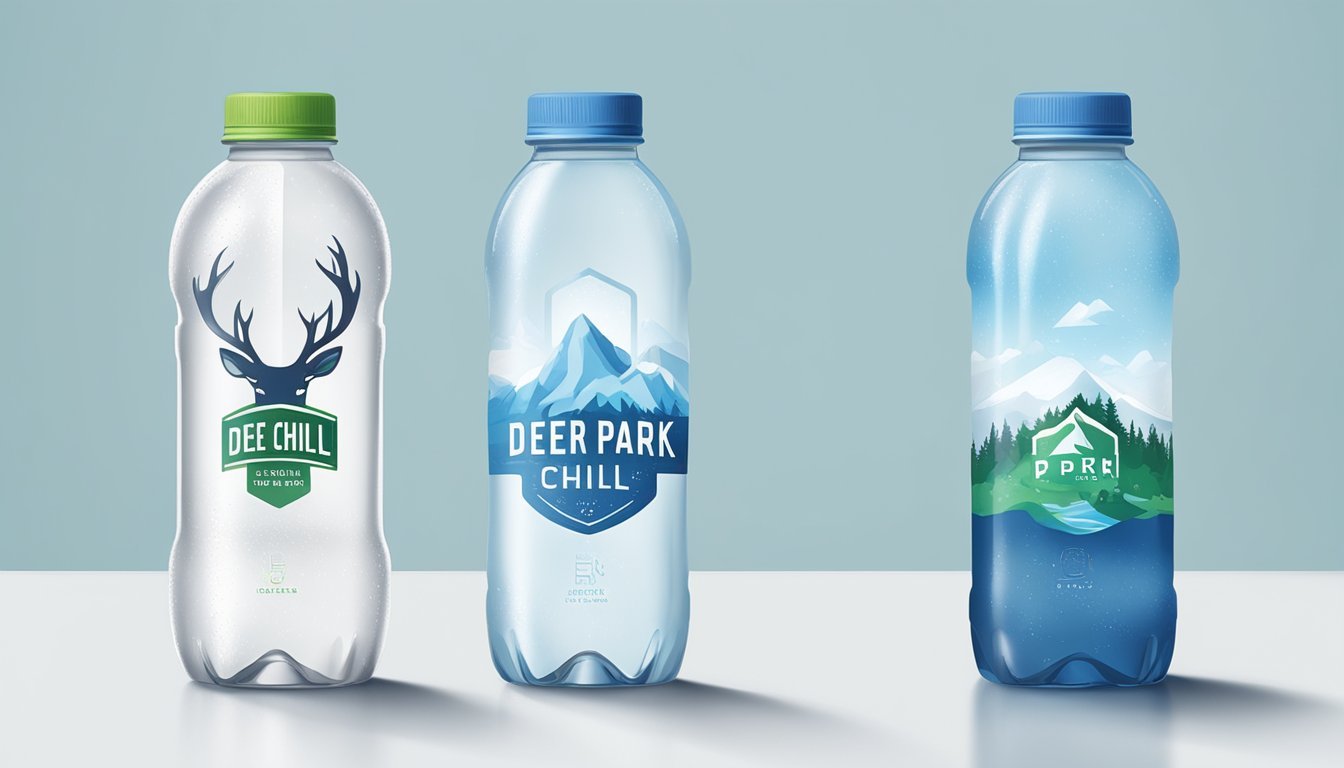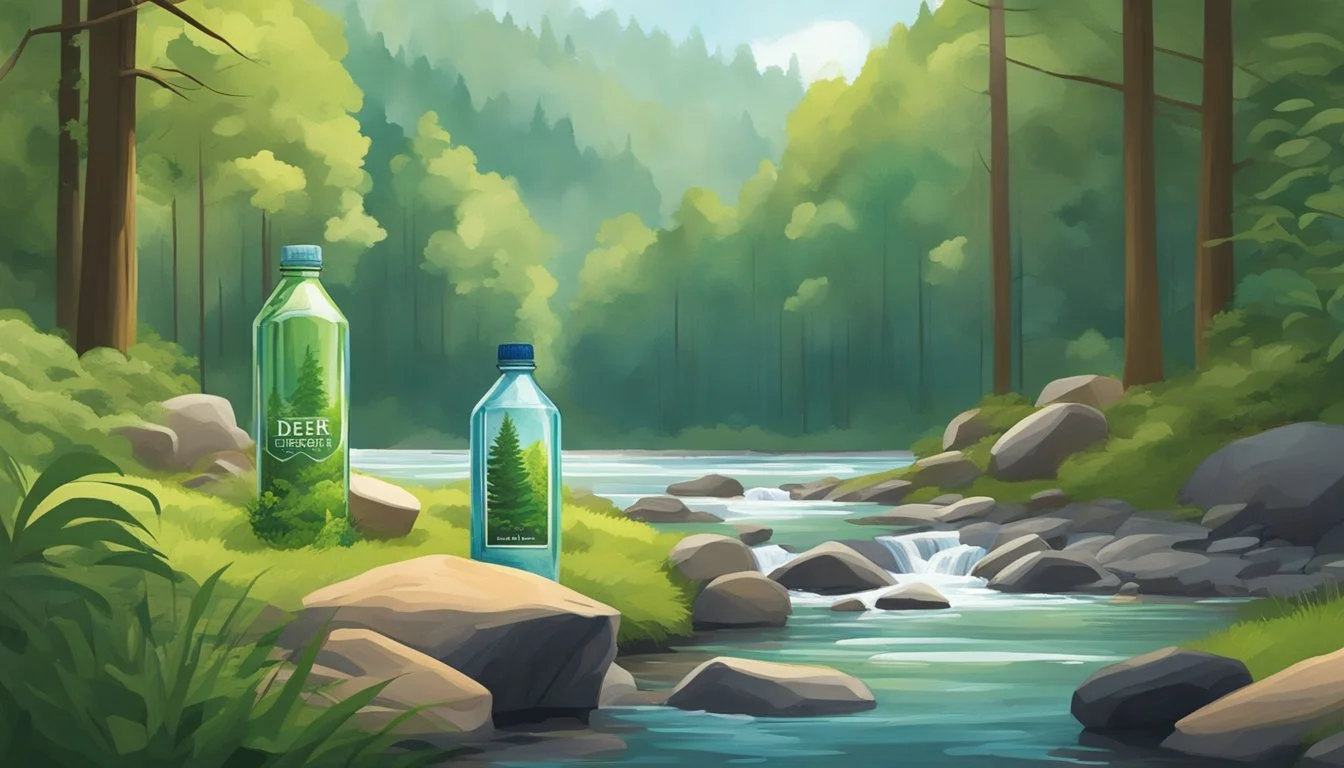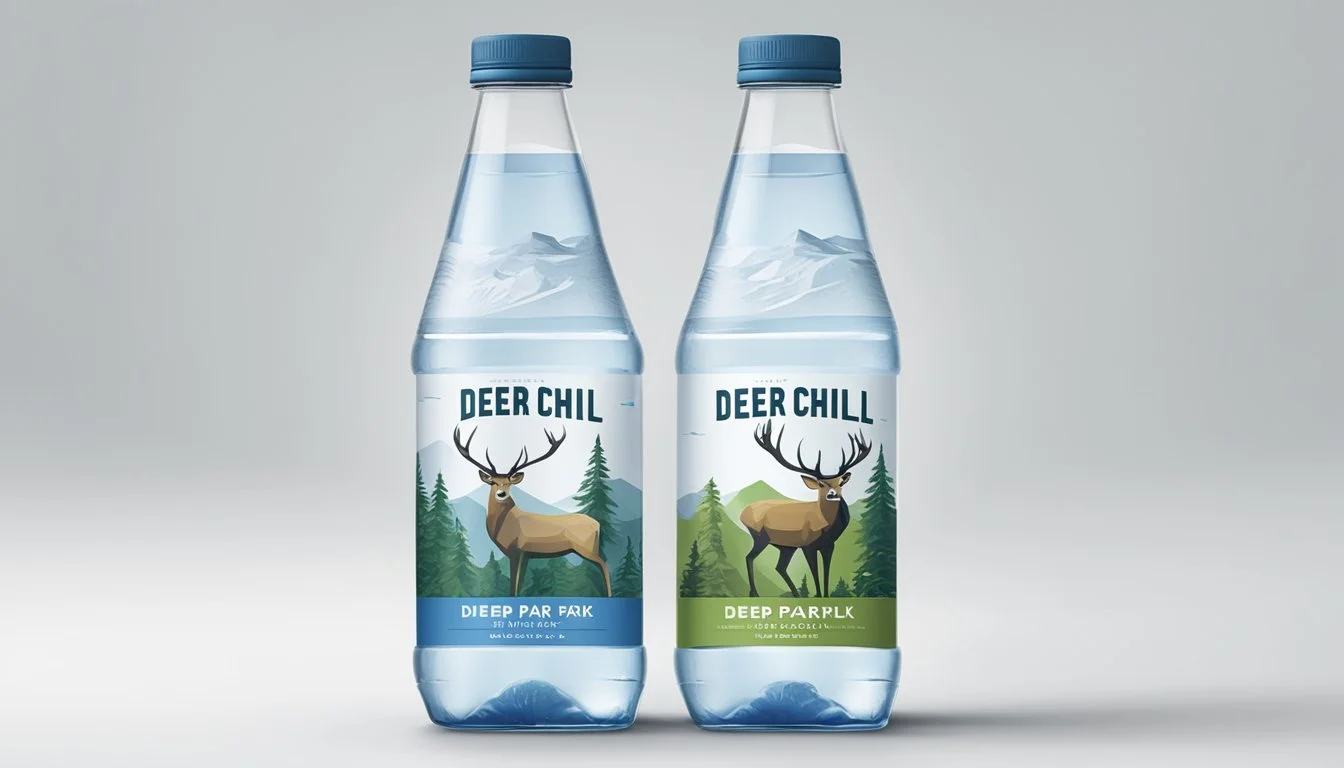Deer Park vs. Big Chill
Which Bottled Water is Better for You?
When it comes to choosing bottled water, Deer Park and Big Chill are two brands that often come up in discussions. Deer Park, known for its 100% natural spring water sourced from springs across the eastern United States, has garnered a reputation for its crisp and refreshing taste. Big Chill, on the other hand, offers purified water that's filtered to remove impurities, aiming to provide a clean and smooth flavor.
For those seeking a natural and mineral-rich option with a taste that reflects its spring origins, Deer Park might be the preferable choice. Its minimal processing ensures that the water retains its natural characteristics, appealing to those who prioritize purity and taste derived straight from nature.
Big Chill offers a straightforward, no-fuss option that focuses on purity through modern filtration methods. This makes it suitable for individuals who prefer a consistent, clean taste that is free from any natural variations. Both products have their merits, but the decision ultimately depends on whether you prefer the natural taste of Deer Park or the consistently clean flavor of Big Chill.
Overview of the Bottled Water Industry
The bottled water industry has experienced significant growth over the years, driven by the demand for clean, convenient, and accessible drinking water. Various brands compete in this space, each offering unique attributes and sources to attract consumers.
Rise of Bottled Waters
The global bottled water market has seen a rapid expansion in recent years. Initiated by increasing health consciousness and the necessity for clean water, the market grew by 73% between 2010 and 2020.
Technological advancements and improved purification processes have allowed brands to market their products as superior. The International Bottled Water Association plays a crucial role in setting industry standards and ensuring quality control.
Water Brands Landscape
The landscape of bottled water brands is diverse. Brands such as Aquafina, Deer Park, and Dasani differentiate themselves by their source and purification methods.
Aquafina, for example, is known for its rigorous purification process, whereas Deer Park markets its water as natural spring water. Consumers often choose brands based on taste, mineral content, and brand reputation.
Table: Popular Bottled Water Brands and Their Sources
Brand Source Aquafina Purified water Deer Park Natural springs Dasani Purified with added minerals
Comparing the Contenders
In this section, Deer Park and Big Chill will be examined in terms of brand reputation and the sources of their spring water. Key attributes such as origin and taste will also be explored.
Deer Park: Brand and Source
Deer Park is well-regarded for its 100% natural spring water. Originating from multiple springs across the Eastern Seaboard of the United States, it offers a consistent and crisp taste.
The brand, under the Nestlé umbrella, has built a reputation for its clean and refreshing water. Consumers often trust Deer Park for its reliability and quality assurance. Marketing emphasizes its natural origins, with no added artificial elements.
Sourcing from several locations ensures a stable supply of water. Each spring is chosen for its purity and minimal environmental impact. This plays a crucial role in maintaining the brand's promise of natural and pristine water.
Big Chill: Brand and Source
Big Chill sources its water from pristine springs in the Midwest. Positioned as a competitor to Deer Park, it aims to offer high-quality, natural spring water with a focus on taste and purity.
The brand highlights its commitment to environmental sustainability. Big Chill ensures that its bottling processes have a minimal ecological footprint. This includes responsible water management practices that protect both water sources and surrounding environments.
The water is known for its refreshing taste and natural mineral content. It's marketed as a premium option in the bottled water market, appealing to consumers looking for an eco-friendly choice. The brand's messaging focuses on the purity and origin of its water, appealing to health-conscious buyers.
Water Quality and Purity Assessment
Examining the quality and purity of bottled water involves multiple factors, such as purification processes, presence of contaminants, and adherence to FDA regulations. Deer Park and Big Chill are assessed on these criteria to determine their overall suitability for hydration.
Determining Factors for Quality
Quality in bottled water is defined by mineral content, the presence of any contaminants, and the source of the water.
Deer Park sources its water from natural springs along the Eastern Seaboard, often resulting in a naturally balanced pH.
Big Chill, depending on its sourcing, may also offer similar natural mineral profiles. Consumers often seek a neutral pH level, which influences taste and hydration efficacy.
Both brands must adhere to stringent FDA standards to assure their water is free from heavy metals and other harmful substances.
Role of Purification Processes
Purification processes impact the overall purity and taste of bottled water.
Big Chill typically employs advanced purification techniques, including reverse osmosis and carbon filtration, to remove impurities and ensure a clean taste.
Conversely, Deer Park relies on minimal processing due to its natural spring source, which preserves its natural minerals but still subjects it to rigorous filtering to remove potential PFAS chemicals and other contaminants.
The presence or absence of specific minerals post-purification can affect hydration quality, with purified water often lacking the natural minerals found in spring water.
Evaluating Purity Standards
Both Deer Park and Big Chill must comply with FDA regulations to ensure their products are safe for consumption.
Consumer Reports have pointed out that some bottled waters can contain toxic PFAS chemicals or other contaminants if not properly filtered.
Deer Park’s commitment to sourcing from natural springs must be maintained through continuous safety checks.
Big Chill, through its artificial purification processes, often boasts a high level of water purity. Both brands aim to provide safe, mineral-balanced water by adhering to and often exceeding established purity standards.
Strict monitoring and periodic testing ensure no harmful heavy metals or other dangerous contaminants make it into the final product, making hydration both safe and optimal.
Health and Hydration
Both Deer Park and Big Chill offer essential hydration benefits and have various health considerations to keep in mind.
Hydration Benefits
Deer Park and Big Chill both excel in providing hydration, a crucial factor for maintaining overall health and wellbeing. Proper hydration supports digestion, regulates body temperature, and keeps joints lubricated.
Deer Park, sourced from natural springs, offers a refreshingly clean taste. Its natural origin may indicate a richer profile of minerals like calcium and magnesium, which are essential for muscle function and bone health.
Big Chill, while equally effective in hydration, is often processed to remove impurities. This results in a purer form of water, although it might lack some beneficial minerals found in natural spring water.
Many consumers look at the pH level of bottled water as an indicator of its hydration quality. While Deer Park tends to have a balanced pH, Big Chill usually falls within a neutral to slightly alkaline range, helping maintain electrolyte balance.
Health Considerations
When choosing bottled water, health concerns such as contamination and nutrient content are critical. Deer Park prides itself on being free from harmful substances like lead and PFAS chemicals, which have been linked to various adverse health effects.
Similarly, Big Chill is rigorously tested to ensure it meets health standards, making it a safe choice. It often goes through filtration processes, removing potential contaminants while leaving behind a pure taste.
In terms of minerals, Deer Park often contains natural levels of calcium and magnesium, contributing to dietary intake. Big Chill might add minerals such as potassium to enhance the water's health benefits.
Consumers selecting bottled water for health considerations should weigh factors like potential contaminants, mineral content, and personal health needs. Deer Park and Big Chill both aim to provide a safe and hydrating product, catering to different preferences and requirements.
Taste Profile Analysis
Deer Park and Big Chill both offer distinct water experiences. Examining factors such as taste, aftertaste, and flavor consistency helps highlight the differences between these two brands.
Determining Taste Factors
Taste is influenced by various elements, including the water source, mineral content, and pH level.
Deer Park is sourced from natural springs across the eastern United States. It is known for its crisp, refreshing taste, attributed to its balanced mineral content and relatively neutral pH level, which typically ranges between 6.3 and 8.7.
Big Chill, on the other hand, sources its water differently, although specific details about its origin are less prominent. Its taste is often described as smooth and clean. The varying mineral content may result in subtle differences in flavor, providing a distinct taste experience.
Aftertaste and Flavor Consistency
Aftertaste and consistency are crucial aspects of bottled water.
Deer Park tends to have a minimal aftertaste, which is a testament to its purity and natural spring source. The flavor remains consistent across different batches, ensuring a reliable drinking experience each time.
Big Chill also maintains a clean aftertaste, although some consumers may notice slight variances in flavor consistency. This can be due to the less detailed information about their water sourcing and processing, albeit it still provides a quality taste experience.
Both brands focus on delivering a palatable and pure product, differing mainly in their sourcing and subtle taste profiles.
Packaging and Environmental Sustainability
The comparison of Deer Park and Big Chill bottled water extends beyond taste and quality to their packaging and environmental sustainability. Key factors include bottling materials, their impact on the environment, and the sustainability initiatives each brand pursues.
Bottling Materials
Deer Park primarily uses plastic bottles, particularly PET (polyethylene terephthalate), which is BPA-free and widely recyclable. The brand ensures that its bottles are lightweight, aiming to reduce the amount of plastic used per bottle.
Big Chill, on the other hand, also utilizes plastic bottles but has reported initiatives towards incorporating more recycled PET (rPET) in their production. This choice helps in lowering the demand for new plastic, emphasizing Big Chill's goal of minimizing its environmental footprint through its packaging choices.
Impact on the Environment
Both brands understand the importance of reducing environmental impact. Deer Park's plastic bottles, while recyclable, do contribute to plastic pollution if not disposed of properly.
Big Chill has demonstrated a stronger commitment to using recycled materials. This decision reduces waste and the need for virgin plastics. Both brands emphasize the significance of recycling to mitigate the adverse effects of plastic disposal on the environment.
Sustainability Initiatives
Deer Park has embarked on several sustainability initiatives. It promotes water stewardship and has committed to using 100% recycled materials in some of its bottle lines. Its focus on water stewardship protects springs and surrounding ecosystems.
Big Chill has also adopted a zero-waste approach in its production facilities. They actively invest in renewable energy sources and have set ambitious goals to increase the use of rPET in their bottles.
Both brands encourage consumers to recycle and support eco-friendly practices. Their efforts reflect a dedication to improving the sustainability of their packaging and reducing their overall environmental impact.
Consumer Preferences and Perceptions
Consumer preferences for Deer Park and Big Chill bottled water are influenced by factors such as price point, taste, and brand reputation. Market trends and brand loyalty play crucial roles in shaping these preferences.
Market Trends
Recent market trends reveal a growing consumer interest in natural and spring water. Deer Park, known for its 100% natural spring water sourced from springs along the Eastern Seaboard, aligns well with this trend. Big Chill focuses on value and price point, often making it the choice for budget-conscious consumers.
Water sommeliers and experts frequently evaluate bottled water, and their reviews often influence public perception. Tastings often highlight Deer Park's crisp and clean profile, adding to its appeal among those seeking premium spring water.
Understanding the preferences within different grocery stores also plays a role. Big Chill is often found in budget-friendly sections and bulk purchases, catering to families and large groups, whereas Deer Park is marketed in high-traffic, premium locations.
Brand Loyalty and Reputation
Brand loyalty and reputation significantly impact consumer choices between Deer Park and Big Chill. Deer Park enjoys a robust reputation for its natural spring sources and consistent quality. It has built a loyal customer base who trust its purity.
Big Chill, while positioned more as a value brand, has gained respect among consumers looking for an economical option without sacrificing basic quality. Although it may lack the natural spring water allure, its effective marketing strategies have carved out a niche in competitive price points.
Price point often influences brand loyalty. Deer Park’s slightly higher cost is justified by its emphasis on natural spring water, appealing to those who prioritize taste and water source. Conversely, Big Chill attracts those who prioritize affordability and sufficient quality.
In summary, buyer decisions between Deer Park and Big Chill are guided by individual values concerning water quality, price, and brand trust.
Regulatory Compliance and Safety
Deer Park and Big Chill must meet strict regulatory standards to ensure their products are safe for consumers. This section examines the regulations governing bottled water and the public trust in these safety measures.
FDA Standards and Testing
Bottled water, including Deer Park and Big Chill, must comply with the Food and Drug Administration (FDA) regulations. These regulations are aligned with Environmental Protection Agency (EPA) standards for tap water.
The FDA requires regular testing for contaminants. Both brands must provide results to demonstrate compliance. This includes testing for microbiological, physical, chemical, and radiological contaminants.
Labeling requirements also play a crucial role. Bottled water labels must accurately reflect the source and composition. They must be clear and not misleading. This ensures consumers have reliable information about what they are drinking.
Water Safety and Public Trust
Water safety goes beyond regulatory compliance. Regular and transparent testing reports are vital. These reports help to verify that the water is safe and meets all required safety standards.
Consumers trust brands that provide clear information about their safety practices. Deer Park, marketed as 100% natural spring water, emphasizes its natural sources. Big Chill, similarly, must communicate its safety measures effectively to maintain consumer trust.
PFAS chemicals have been a growing concern. Bottled water brands need to test for these and ensure levels are below the safety limits set by authorities. Transparency in these results can significantly affect public perception and trust.
Final Thoughts and Recommendations
When comparing Deer Park and Big Chill bottled water, several factors come into play, including water quality, potential health benefits, and overall consumer guidance.
Water Quality:
Deer Park: Sourced from natural springs, boasting a pH of around 7.0. This neutral pH level can appeal to those seeking balanced water.
Big Chill: Known for its stringent purification process, which ensures a consistent and pure taste.
Health Benefits:
Deer Park: As a natural spring water, it contains trace minerals that may contribute to health, offering a refreshing and potentially beneficial hydration option.
Big Chill: The meticulous purification may remove some beneficial minerals but ensures the water is free from contaminants.
Consumer Guidance:
For those valuing a natural source, Deer Park stands out with its spring origins.
Big Chill might be preferred by consumers who prioritize uniform taste and purity due to advanced purification techniques.
Each choice comes with its respective advantages based on individual needs.
Recommendations:
Choose Deer Park if you favor a natural water source with balanced pH.
Opt for Big Chill if you prefer a reliably purified water.
Each brand caters to different preferences, making it essential to consider personal taste and health requirements.
More About Deer Park
Deer Park vs Cascade Mountain: Which Bottled Water is Better?
Deer Park vs Hawaii Volcanic: Which Bottled Water is Better?
Deer Park vs Hawaiian Springs: Which Bottled Water is Better?
Deer Park vs Icelandic Glacial: Which Bottled Water is Better?
Deer Park vs Kirkland Signature: Which Bottled Water is Better?
Deer Park vs Mountain Valley Spring Water: Which Bottled Water is Better?
Deer Park vs Nestle Pure Life: Which Bottled Water is Better?
Deer Park vs Richard's Rainwater: Which Bottled Water is Better?
Deer Park vs Solan de Cabras: Which Bottled Water is Better?
Deer Park vs Talking Rain AQA: Which Bottled Water is Better?
Deer Park vs Whole Foods 365: Which Bottled Water is Better?
Deer Park vs Whole Foods Italian Still Mineral water: Which Bottled Water is Better?
More About Big Chill
Big Chill vs Kirkland Signature: Which Bottled Water is Better?
Big Chill vs Talking Rain AQA: Which Bottled Water is Better?
Big Chill vs Whole Foods 365: Which Bottled Water is Better?
Cascade Mountain vs Big Chill: Which Bottled Water is Better?
Hawaii Volcanic vs Big Chill: Which Bottled Water is Better?
Hawaiian Springs vs Big Chill: Which Bottled Water is Better?
Icelandic Glacial vs Big Chill: Which Bottled Water is Better?
Mountain Valley Spring Water vs Big Chill: Which Bottled Water is Better?
Nestle Pure Life vs Big Chill: Which Bottled Water is Better?
Richard's Rainwater vs Big Chill: Which Bottled Water is Better?
Solan de Cabras vs Big Chill: Which Bottled Water is Better?
Whole Foods Italian Still Mineral water vs Big Chill: Which Bottled Water is Better?








